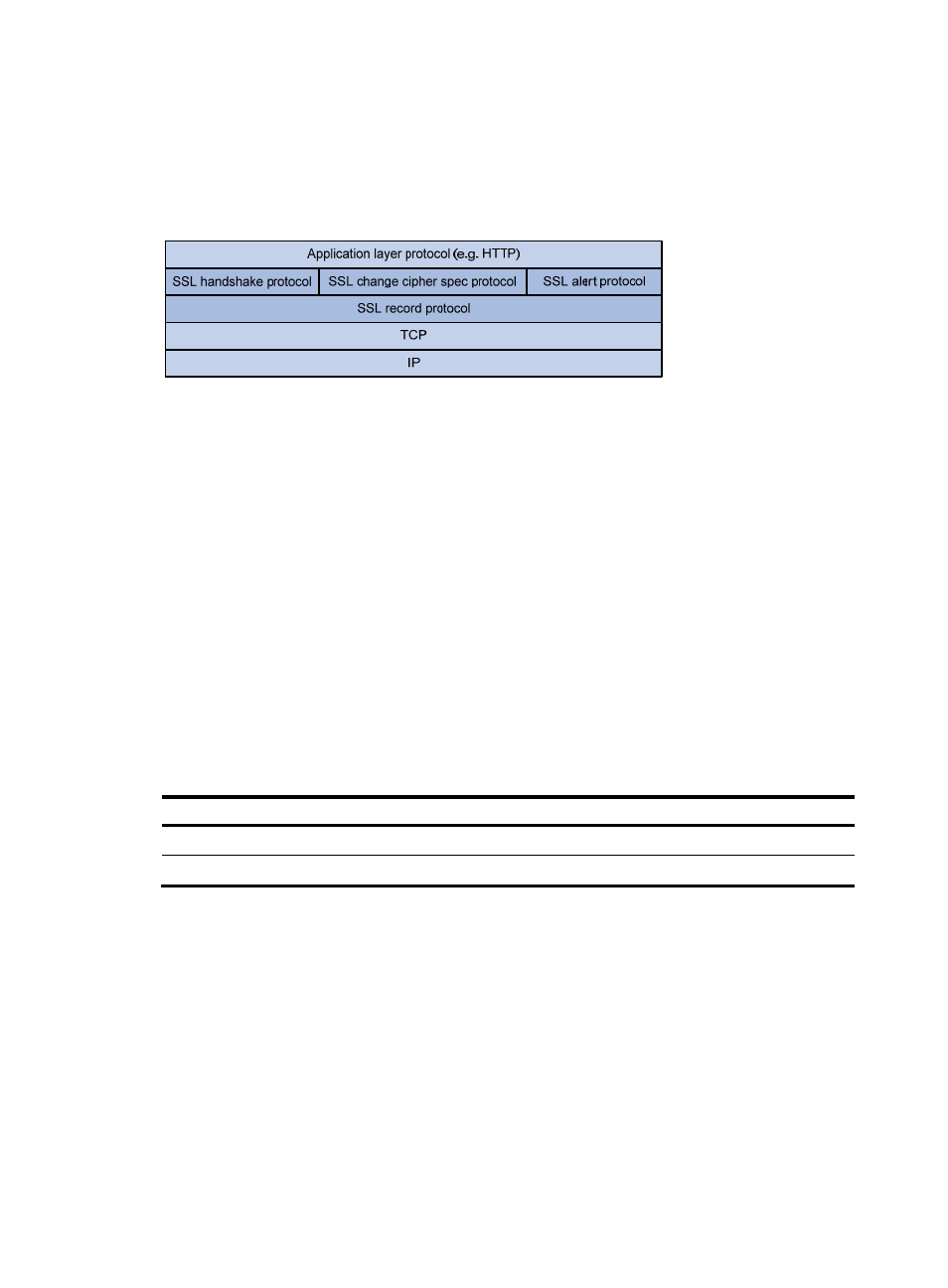Ssl protocol stack, Configuration task list, Configuring an ssl server policy – H3C Technologies H3C SecBlade LB Cards User Manual
Page 161

150
SSL protocol stack
The SSL protocol consists of two layers of protocols: the SSL record protocol at the lower layer and the SSL
handshake protocol, change cipher spec protocol, and alert protocol at the upper layer.
Figure 71 SSL protocol stack
•
SSL record protocol—Fragments data to be transmitted, computes and adds MAC to the data, and
encrypts the data before transmitting it to the peer end.
•
SSL handshake protocol—Negotiates the cipher suite to be used for secure communication
(including the symmetric encryption algorithm, key exchange algorithm, and MAC algorithm),
securely exchanges the key between the server and client, and implements identity authentication
of the server and client. Through the SSL handshake protocol, a session is established between a
client and the server. A session consists of a set of parameters, including the session ID, peer
certificate, cipher suite, and master secret.
•
SSL change cipher spec protocol—Used for notification between the client and the server that the
subsequent packets are to be protected and transmitted based on the newly negotiated cipher suite
and key.
•
SSL alert protocol—Enables the SSL client and server to send alert messages to each other. An alert
message contains the alert severity level and a description.
Configuration task list
Task Remarks
Configuring an SSL server policy
Required.
Configuring an SSL client policy
Optional.
Configuring an SSL server policy
An SSL server policy is a set of SSL parameters for a server to use when booting up. An SSL server policy
takes effect only after it is associated with an application such as HTTPS.
SSL versions include SSL 2.0, SSL 3.0, and TLS 1.0 (or SSL 3.1). When the device acts as the SSL server,
it can communicate with clients running SSL 3.0 or TLS 1.0, and can identify the SSL 2.0 Client Hello
message from a client supporting both SSL 2.0 and SSL 3.0/TLS 1.0, and notify the client to use SSL 3.0
or TLS 1.0 for communication.
To configure an SSL server policy:
